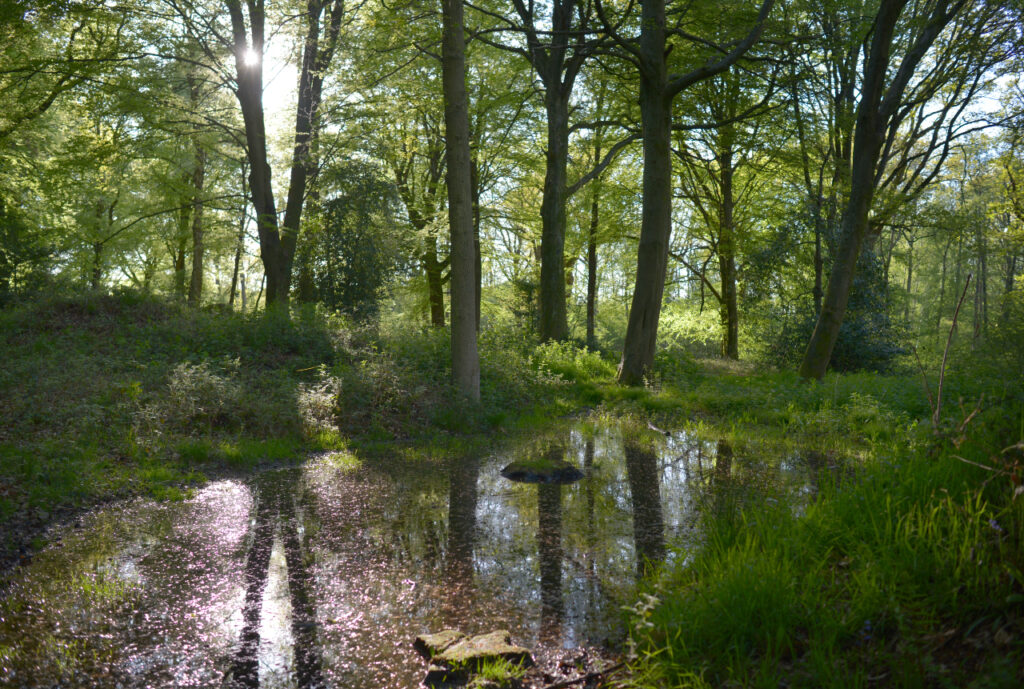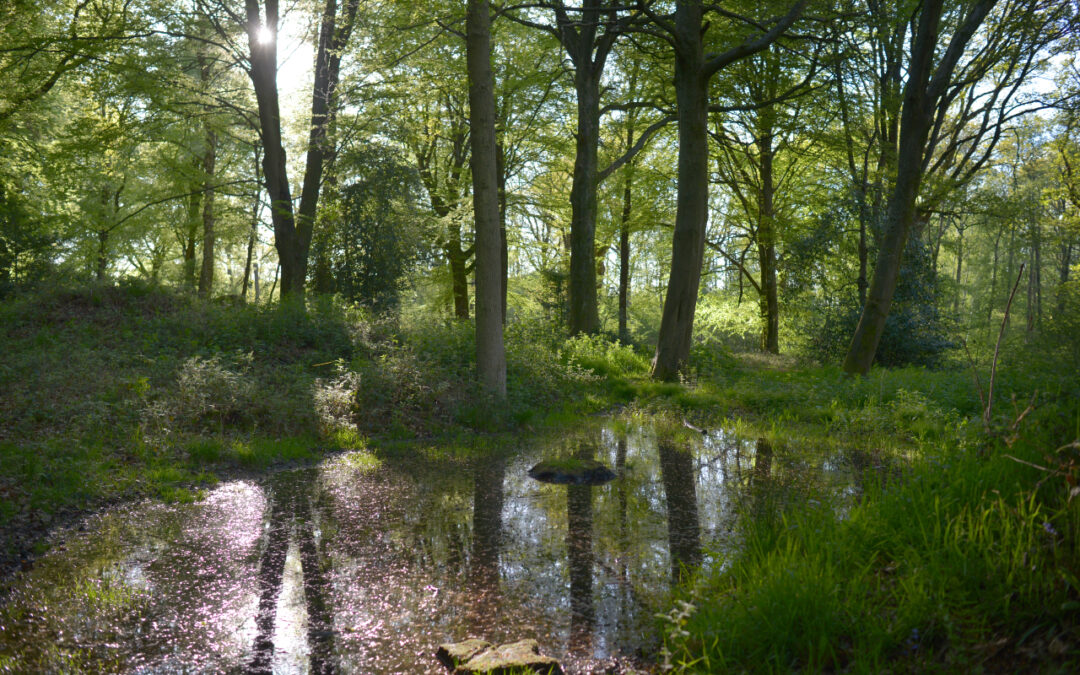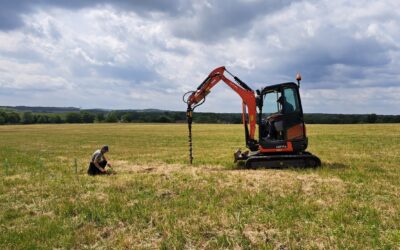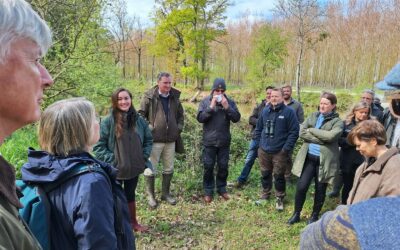This month I heard a cuckoo for the first time. It was amazing for two reasons. First, our ranger Andy tells me it’s the first time in years that cuckoos have been heard at Ewhurst Park – so that is really special. And secondly, for me, it was the first time I had ever heard a cuckoo! Growing up in Malaysia, we don’t have cuckoos, so I only knew about cuckoos from TV and cuckoo clocks. So it was wonderful to hear the cuckoo’s distinctive call in real life.
The return of the cuckoo – and hearing birdsong fill the air – is just one of the signs that regeneration is happening at Ewhurst Park. It is gratifying to think that we are playing our part in enabling this to happen. Since I took over the estate, we have been doing a lot of research to understand what thrives naturally here – and I have learned that one of the key ways into this is to study our ancient woodland.
In England, ancient woodland is a technical term that refers to wooded areas that have persisted since 1600. At Ewhurst Park, we have five areas classified as semi-natural ancient woodland, making up two-thirds of our total woodland, which is nearly 200 acres.

Ancient woodlands at Ewhurst Park.
Interestingly, it is not the trees themselves that are most indicative of the make-up of the land – this is because over the years the trees will have been felled, replanted or naturally regenerated. Rather, it is the ground flora that provides the biggest clue about what thrives naturally. The ground flora tells you the story. We learn which plants and shrubs are native to the site, and which we can expect to see re-emerge as part of the process of natural regeneration.
Looking around at the moment, we see a lot of bluebells, which is very characteristic of ancient woodland. We also have white anemone, wild irises, woodruff, wood anemone and, very beautifully, whole swathes of wild purple orchids have popped up this year (earlier in the year we were pleased to see plenty of wild garlic and ox-eye daisy).
And, of course, the health of the flora is linked to the diversity of insect, animal and bird life, with everything interacting as a whole. When we reduce intensive farming and use fewer chemicals, the ground flora thrives, the invertebrates thrive, wildlife thrives – we have more birds, more butterflies, more dragonflies – the whole system is thriving. It’s good for the soil, for carbon capture, and for contributing to the seed bank.
So, getting to know our ancient woodland is very important for making decisions around conservation and preservation. The aim is to better steward our woodlands so they will flourish.
Hearing the cuckoo and seeing the wildflowers bloom is therefore a wonderful thing – they are reassuring signs that regeneration is happening. With nature, there’s no instant gratification – no quick fix – but we can persist in our recovery project and look for indications that regeneration is taking place.
Truly unique
From the Woodland Trust website: “Ancient woods are our richest and most complex terrestrial habitat in the UK and they are home to more threatened species than any other. Centuries of undisturbed soils and accumulated decaying wood have created the perfect place for communities of fungi and invertebrates. Other specialist species of insects, birds and mammals rely on ancient woodlands. Ancient woods also retain important archaeological features, often from past industry and management, and can also protect large features like earthworks from damage.”
For more information, visit https://www.woodlandtrust.org.uk/trees-woods-and-wildlife/habitats/ancient-woodland/




